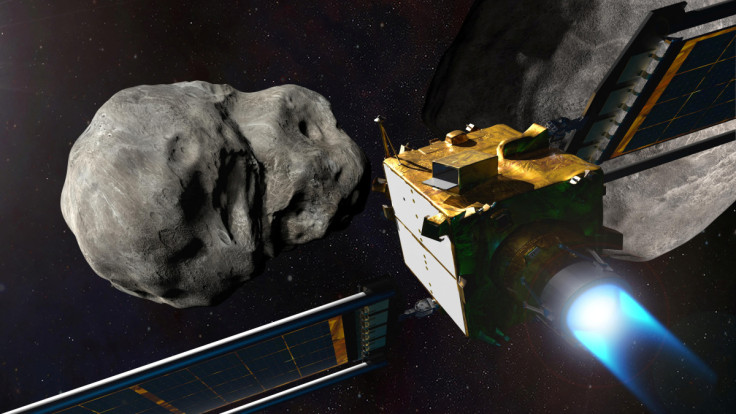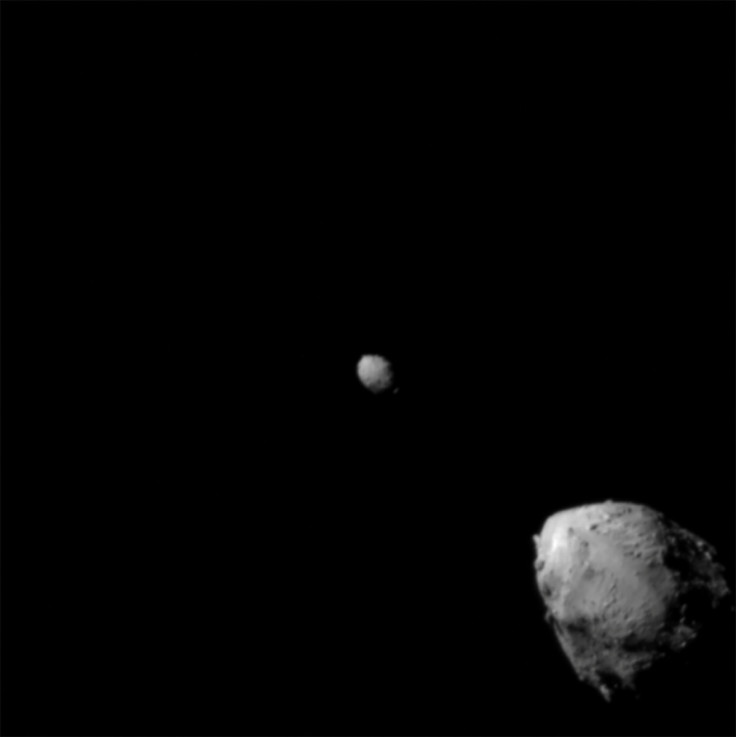Asteroid's Path Altered In NASA's First Test Of Planetary Defense System

The spacecraft that NASA deliberately crashed into an asteroid last month succeeded in nudging the rocky moonlet out of its natural orbit - the first time humanity has altered the motion of a celestial body - NASA officials announced on Tuesday.
The $330 million proof-of-concept mission, which was seven years in development, also marked the world's first test of a planetary defense system designed to prevent a potential doomsday meteorite collision with Earth.
Findings of telescope observations unveiled at a NASA news briefing in Washington confirmed that the suicide test flight of the DART spacecraft on Sept. 26 achieved its primary objective: changing the direction of an asteroid through sheer kinetic force.
Astronomical measurements over the past two weeks showed that the target asteroid was bumped slightly closer to the larger parent asteroid it orbits in space and that its orbital period was shortened by 32 minutes, NASA scientists said.
"This is a watershed moment for planetary defense and a watershed moment for humanity," NASA chief Bill Nelson told reporters in announcing the results. "It felt like a movie plot, but this was not Hollywood."
Last month's impact, 6.8 million miles (10.9 million km) from Earth, was monitored in real time from the mission operations center at the Johns Hopkins University Applied Physics Laboratory (APL) in Laurel, Maryland, where the spacecraft was designed and built for NASA.
The celestial target of the DART flight was an egg-shaped asteroid named Dimorphos, roughly the size of a football stadium, that was orbiting a parent asteroid about five times bigger called Didymos once every 11 hours, 55 minutes.
The aim was to fly the DART impactor vehicle - no bigger than a refrigerator - directly into Dimorphos at about 14,000 miles per hour (22,531 kph), creating enough force to shift the moonlet's orbital track closer to its larger companion.
Comparison of pre- and post-impact measurements of the Dimorphos-Didymos pair showed the orbital period was shortened to 11 hours, 23 minutes.
POSSIBLE WOBBLE
Tom Statler, DART program scientist for NASA, said the collision also left Dimorphos "wobbling a bit," but additional observations would be necessary to confirm that.
The outcome "demonstrated we are capable of deflecting a potentially hazardous asteroid of this size," if it were discovered well enough in advance, said Lori Glaze, director of NASA's planetary science division. "The key is early detection."
Neither of the two asteroids involved, nor DART itself - short for Double Asteroid Redirection Test - posed any actual threat to Earth, NASA scientists said.
But Nancy Chabot, DART's coordination lead at APL, said Dimorphos "is a size of asteroid that is a priority for planetary defense."
A Dimorphos-sized asteroid, while not capable of posing a planet-wide threat, could level a major city with a direct hit.
Scientists had predicted the DART impact would shorten Dimorphos' orbital path by at least 10 minutes but would have considered a change as small as 73 seconds a success. So the actual change of more than a half hour exceeded expectations.
Launched by a SpaceX rocket in November 2021, DART made most of its voyage under the guidance of flight directors on the ground, with control handed over to the craft's autonomous on-board navigation system in the final hours of the journey.
Dimorphos and Didymos are both tiny compared with the cataclysmic Chicxulub asteroid that struck Earth some 66 million years ago, wiping out about three-quarters of the world's plant and animal species including the dinosaurs.
Smaller asteroids are far more common and present a greater theoretical concern in the near term, making the Didymos pair suitable test subjects for their size, according to NASA scientists and planetary defense experts.
Also, the two asteroids' relative proximity to Earth and dual configuration made them ideal for the DART mission.
The Dimorphos moonlet is one of the smallest astronomical objects to receive a permanent name and is one of 27,500 known near-Earth asteroids of all sizes tracked by NASA. Although none are known to pose a foreseeable hazard to humankind, NASA estimates that many more asteroids remain undetected in the near-Earth vicinity.

© Copyright Thomson Reuters {{Year}}. All rights reserved.





















